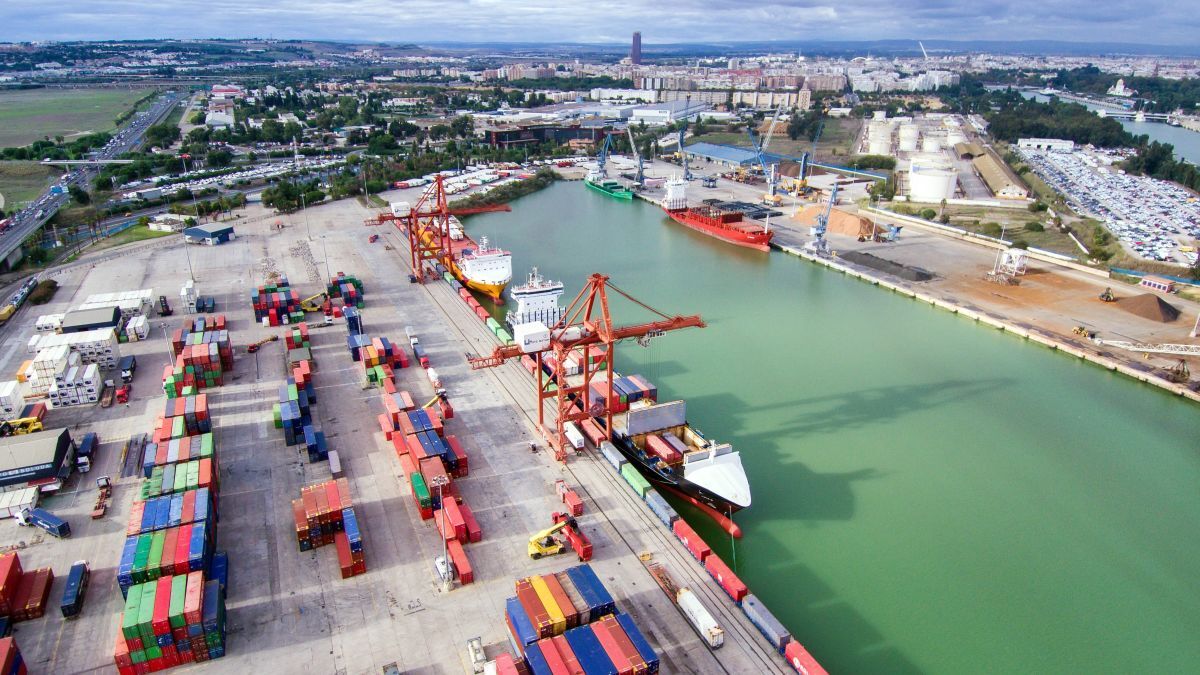Vessel monitoring data can be augmented with weather forecasts and operational information
Insights into shipping markets, cargo trading and navigation can be derived from the latest vessel tracking information from the automatic identification system (AIS).
Charterers, traders, ship and port operators, vessel owners and bridge crews gain information and analysis from processing AIS data.
Getting this information from ships to customers involves several steps and interfaces from a global constellation of satellites and network of coastal receptors, while captains can view AIS signals from surrounding vessels on bridge equipment.
The next phase of utilising AIS for safe and efficient navigation would be to incorporate it into a global system for just-in-time (JIT) port arrival.
Spire Maritime director of maritime data operations Mark Deverill says AIS data for vessel tracking will help shipowners and operators to avoid idling at anchorage prior to entering ports, lowering fuel consumption, reducing emissions and improving fleet utilisation.
Spire is one of the main suppliers of AIS data from a constellation of 120 satellites, with the latest satellite launched June 2022.
Mr Deverill says satellite AIS helps users to “increase data-driven decisions and gain competitive advantage”. AIS can be used to track vessels, predict their arrival at ports and provide forecasting services.
“Spire Maritime provides data and tools to predict arrivals and metrics around port operations,” says Mr Deverill. It can monitor vessel traffic on a global basis and track individual ships, monitor vessels’ arrival and departure from anchorages and map next-destination ports.
This is achieved with dynamic AIS, combining three types of AIS collection including a terrestrial network and satellite AIS. Data is delivered through application programming interfaces (APIs) and messages to graphical displays.
“We enhance our data with vessel characteristics data, AIS deduplication and cleaning, by matching destinations with predicted routes and estimated time of arrival (ETA),” Mr Deverill says.
Spire’s satellite constellation sees 250,000 unique vessels each day, including 67,000 IMO-registered vessels and 350M messages per day. It has held a comprehensive database of AIS information since 2019.
It provides data and tools to predict arrivals and metrics around port operations, to monitor vessel traffic and remove errors from AIS messages.
Under dynamic AIS, data is processed to improve vessel tracking in the world’s busiest shipping areas by combining three types of AIS into one service.
Spire can add 35 parameters, providing further vessel information within the Vessels API such as capacity, design, dimensions, history, propulsion, registration, vessel and trading type.
It aims to provide a complete representation of each ship based on AIS messages, external data sources and analysing ship behaviour. AIS data can also be linked to maritime weather forecasts and ports data.
“We can create data on port congestion and turnaround times and forecast weather-related risks along a route,” says Mr Deverill. “We can predict ETAs, matching them with the destination port information. We can then verify or correct the reported ETA from AIS.”
Spire data allows users to monitor movements outside ports to verify congestion reports and recognise which ports have the longest waiting times, by monitoring ships at anchorage points outside ports and their movement into harbours.
Analysts can then monitor congestion around ports and provide ships with information on the expected waiting times at anchorages before their arrival. Spire has developed a port congestion tool and a global index, using AIS data to identify the worst vessel waiting times.
Its weather data enables long-period forecasts along routes and ports, which can be fed into voyage plans.
“After the tracking, port activity monitoring, route and ETA prediction, the final parts of the equation are weather services and adding the arrival predictions without direct operational involvement,” says Mr Deverill.
Spire provides weather forecasts and historic data for maritime and ports and weather risk analysis along proposed ports.
New onboard device
MarineTraffic has introduced an onboard device enabling any vessel to become a listening station for AIS. Vessel and meteorological data is collected from the surrounding area, and the vessel broadcasts its own proprietary operational and navigational data for inhouse use.
This equipment is being trialled and should be available early 2023. MarineTraffic expects this to “significantly improve the quality of global maritime vessel tracking data and allow smaller craft using AIS transponders to be detected away from shore for the first time.”
It will extend and augment the MarineTraffic network of 5,000 land-based AIS stations by adding roaming stations.
“Data thrives when it works seamlessly with other data, turning it into real information and actionable intelligence,” says MarineTraffic chief product officer Dimitris Lekkas.
“The connected vessel will deliver more accurate models for vessel arrival times and therefore help reduce fuel consumption. Our users will be able to build their own dashboards and combine their own data with information drawn from the MarineTraffic ecosystem.”
This includes vessel positions, meteorological forecasts, asset values, container tracking and nautical charts.
“We are negotiating with third-party data providers and will be adding more data-overlays, including port costs and rate data, onto the platform,” says Mr Lekkas.
MarineTraffic launched its service for fleet-operations teams to carry out detailed voyage planning, weather forecasting and anticipate port congestion via a dashboard September 2021.
The service includes visual voyage reports to review incidents, performance and charter party compliance. It also offers optimised route suggestions for port-to-port passages.
MarineTraffic has also developed a visibility-for-containers solution, which combines carrier track and trace data, vessel schedules, AIS intelligence and predictive ETAs.
Ship-tracking company Kleos Space has raised US$6.8M to invest in new satellites to identify vessels even when they switch off their AIS.
Kleos’ existing 12 satellites track vessels using their radio frequencies, identifying their location and transmitting this to defence and government users. Four more satellites are due to launch H2 2022. New funds will be used for additional constellation growth beyond the satellites already scheduled for launch.






